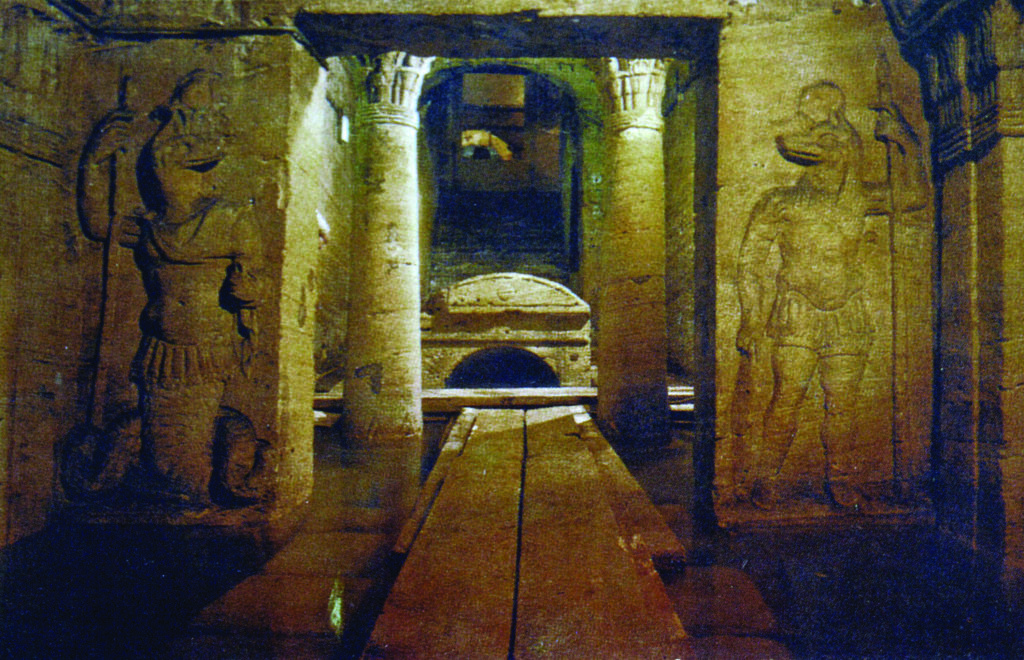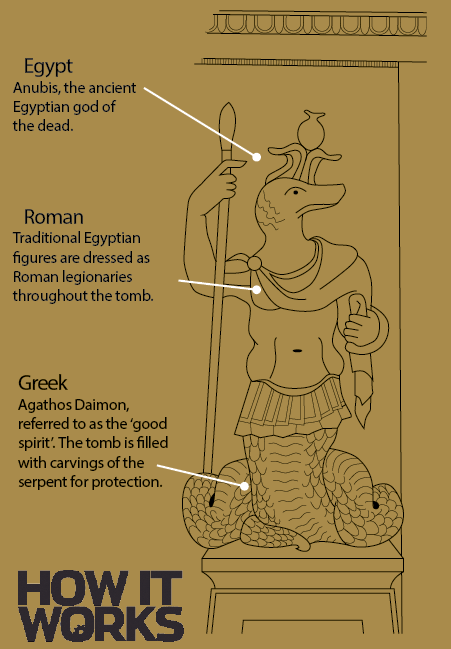Explored: The catacombs of Kom El-Shoqafa
by Scott Dutfield · 05/06/2019

Discover one of the seven wonders of the Middle Ages
On the northern coast of Egypt, in the bustling city of Alexandria, lay the catacombs of Kom El-Shoqafa. The tomb’s Arab name was given in recognition of the Greek name Lofus Kira, meaning ‘Mound of Shards’. Discovered in 1900, it wasn’t a team of archaeologists that stumbled across these cavernous tombs, but a wayward donkey. If stories are to be believed, an unfortunate stray donkey was swallowed by the parting earth of a hilltop at the site of an ancient village known then as Rhakotis.
Initially intended to house the remains of one affluent family, a total of 300 bodies have been found within. Originally built during the Greek-Roman era during the turn of the second century CE, Egyptians used the underground monument up until the fifth century CE.
Constructed from the surrounding oolitic limestone (stone naturally formed from sand and shell particles), stone pillars and walls would have been erected by hand using simple tools. Descending from the surface entrance, a ten-metre cylindrical staircase leads to a triclinium, a Roman banqueting hall for grieving families, and the rotunda. Bodies of the deceased were lowered down the staircase shaft and carried through to the main tomb to their final resting place.
Kom El-Shoqafa would not have been the only tomb in ancient Alexandria. Subterranean tombs were a part of a Necropolis ‘city of the dead’ in ancient Egypt. It is presumed that other tombs may have been destroyed as a result of earthquakes and urban development.
A mix of inspiration
The catacombs of Kom El-Shoqafa host some of the most unique decorations and sculptures seen in ancient tombs, combining influences from three different cultures.

This article was originally published in How It Works issue 105
For more science and technology articles, pick up the latest copy of How It Works from all good retailers or from our website now. If you have a tablet or smartphone, you can also download the digital version onto your iOS or Android device. To make sure you never miss an issue of How It Works magazine, subscribe today!





